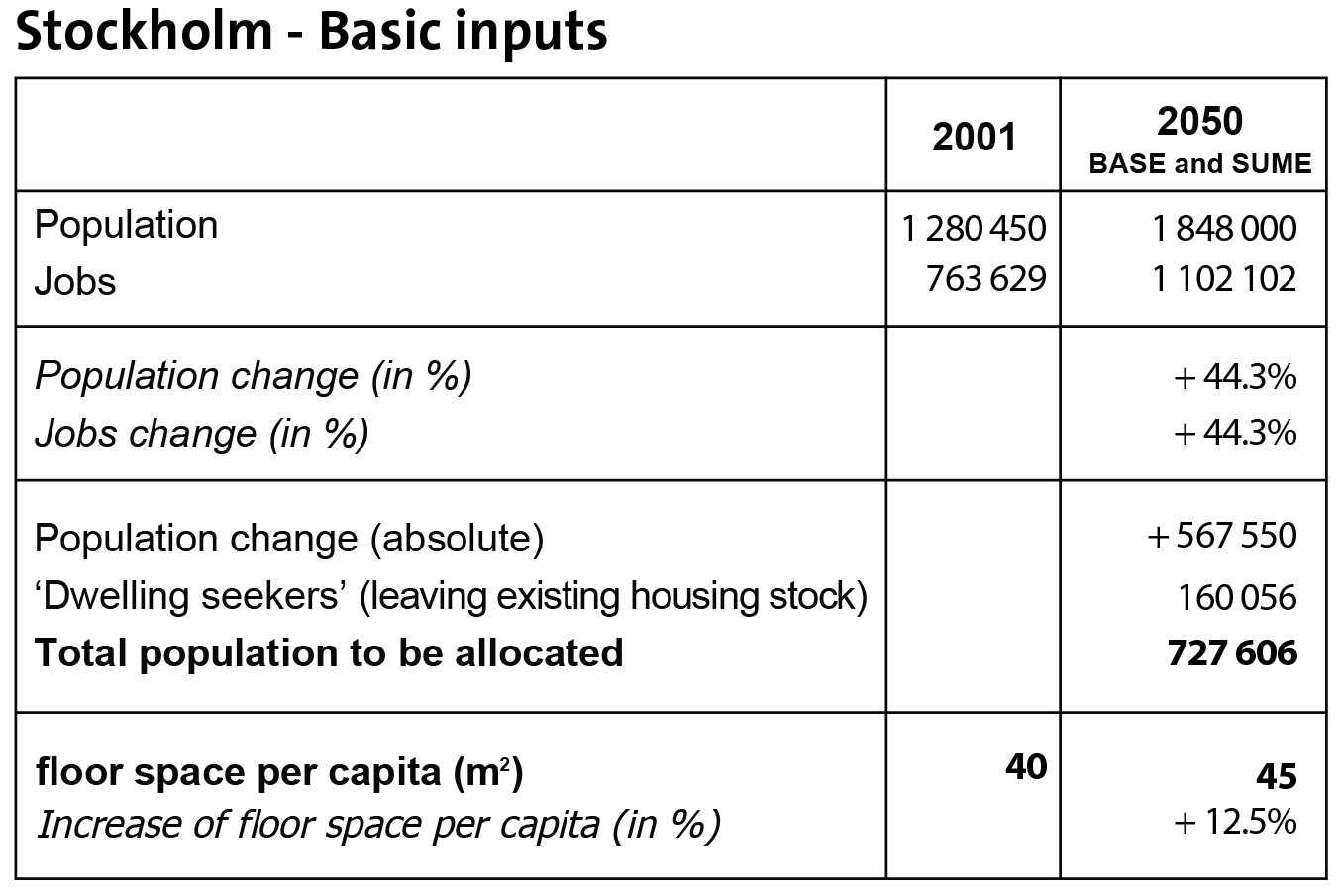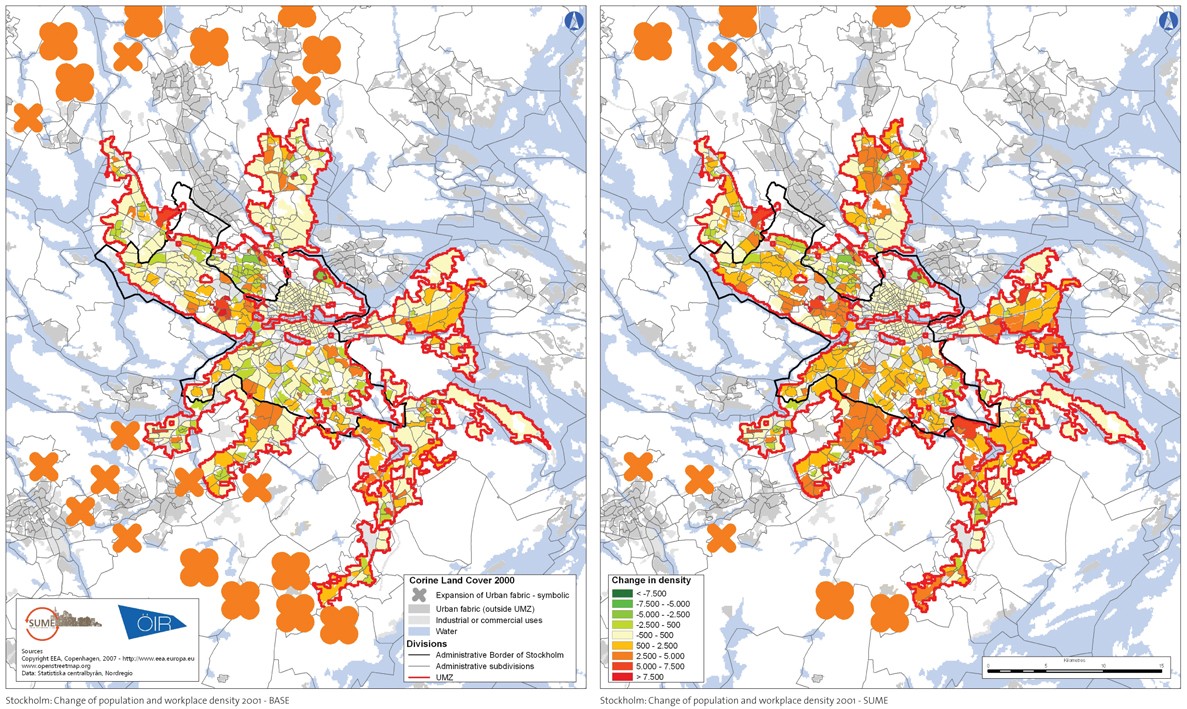
Stockholm City Hall in front of the city centre. Stockholm's inner city is characterised by a demand for property that far exceeds supply. This has led to further densification approaching the limit of what is viewed as appropriate in the city.
They figure prominently in Stockholm's identity, and are fiercely defended against encroachment. These spaces are seen as an important reason for the high quality of Stockholm's urban area, but also limit potential inner city development and lead to greater distances being travelled between various areas; which raises the costs associated with transport infrastructure and increases travel times.
The challenge of accommodating new residents has grown in recent years, particularly in the inner city, where after a
number of decades of out-migration, the housing market has exploded. This trend is expected to continue until at least 2050, by which time the region is forecast to grow by 565 000 residents, or more than 40%.
Further, an additional 160 000 people will need to find housing as a result of an increase in living spaces from 40m2 to 45m2. This means that Stockholm will have to accommodate an addi-tional 725 000 people, something that will place significant strain on the region's resource efficiency. The challenge is com-pounded by the limited space that is available for densification in the inner city of a decidedly monocentric urban form.
In accommodating this growth, Stockholm has several assets however. The region's public transit network is quite well developed, is well used and is closely linked to the region's continued spatial development. Planning authorities are aware of the challenges at hand and have responded with active strategies.
In the inner city, this has led to infill projects on brownfield sites, including the Hammarby Sjöstad and Norra Djurgårdsstaden mixed use projects which will provide 11 000 and 10 000 apartments respectively, along with a great deal of office and commercial space.
At the regional scale, a strategy to promote a more polycentric development pattern that corresponds to the transit network and encourages a more balanced structure has been implemented to reduce dependence on the inner city in terms of employment, leisure and transport. These initiatives indicate that planning authorities in Stockholm have recognised the need to foster more resource-efficient strategies to limit the adverse effects that can accompany growth.
The sheer scale of the population growth that is forecast for Stockholm is however likely to cause some decline in the region's overall resource efficiency. While considerable efforts have been made to promote environmental sustainability in the region, the continuation of current planning strategies in the face of significant growth is forecast to entail a 155km2 expansion of the urban fabric between now and 2050.
The true scale of this expansion is evident in the number of residents, approximately 460 000, who would live in these new areas. Conversely, an even greater focus on resource-aware development, specifically through increased, though realistic, densities concentrated along existing public transport corridors and around the inner city could have less of an impact on the region's resource consumption.
In this scenario, the urban fabric would only expand by 65km2, providing homes for just under 250 000 people. Planning bodies in Stockholm have adopted fairly ambitious strategies for environmental sustainability; however as one of the fastest growing cities in Europe, even greater efforts will be required if Stockholm is to maintain its position as one of the greenest cities on the continent.


The SUME and BASE - Stockholm as an example
The maps at pp 20-21 show the level of densification in the Stockholm Urban Metabolic Zone (UMZ) for 2050 under two scenarios. The BASE scenario, on page 20, projects a continuation of current development trends, while the SUME scenario, on page 21, emphasises a more resource aware planning approach. Comparatively lower densities in the BASE scenario are foreseen as leading to greater sprawl, as shown by the increased number of orange "X's" beyond the existing UMZ boundary. Conversely, a concentration of development along transport corridors and regional growth hubs creates higher densities in the SUME scenario, and therefore reduced sprawl. This is illustrated by the increased presence of orange areas within the UMZ and the fewer number of "X's" outside the UMZ boundary.
Source: ÖIR - The Austrian Institute for Regional Studies and Spatial Planning